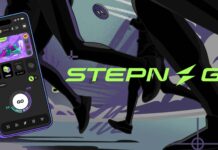[ad_1]
Most early iterations of new technology are a bit crude and somewhat clunky. I remember the days when even connecting to the Internet took a minute or two and the experience seemed like walking through lukewarm oatmeal.
Tools for Adoption
The first versions of websites had little utility, as they were simple digital copies of their physical counterparts. Interaction was limited and transactions were non-existent. In fact, digital payments using the Internet wouldn’t occur until the early 1990s.
Some say two college students sold a small bag of marijuana using ARPANET in 1972, but, according to Smithsonian Magazine, money didn’t actually change hands digitally. The first websites were coded in HTML by designers with technical backgrounds, but as websites became popular, tools emerged to simplify the process.
Front Page, Dreamweaver and Geocities eventually became WordPress, Squarespace and Kajabi. When tools hit the market to simplify adoption of a new concept, it tends to accelerate that adoption. Similar to early websites, the creation of DAOs requires complex coding and technical experience. Today, a number of tools to create and manage DAOs are becoming more readily available.
Managing a DAO
In our exploration of DAOs, we’ve presented them as a new way to organize people and resources around common goals using a human + machine approach. Parts of the organization can be autonomous, but DAOs still require a story, mission and framework that is usually developed by small groups of people.
These founders determine the guiding principles and goals of the organization, how new members will be selected and on-boarded, the token design and allocation, how proposals will be solicited and selected, how to assign roles and power structure, how to signal consensus, how contributors will be rewarded, how malicious activity will be discouraged and reconciled, how the treasury will be secured and allocated, and other general operational principles. DAOs certainly aren’t an easy button for starting a business, but it will continue to become easier to set up, launch and manage a DAO in the coming years.
Introducing DAOHaus
DAOHaus is an Ethereum-based platform for launching and managing DAOs using an open source code called Moloch. According to the MolochDAO whitepaper, its name stems from problems linked to collective action where individual incentives and global goals are misaligned. Initially, MolochDAO’s goals were to resource Ethereum 2 development projects while acknowledging that this required a few individuals to work toward a benefit shared among a larger community.
The Moloch team refers to these challenges as Moloch problems, and their DAO structure appears to be the perfect experiment to find a solution to these collective action roadblocks. The philosophical constructs of MolochDAO are rooted in well known historical context like Tragedy of Commons and The Prisoner’s Dilemma. MolochDAO was started as a grant giving organization that needed to ramp up quickly, which sparked the design of the simple DAO framework now used by DAOHaus. Moloch is the open source code that is the basis for the services offered by DAOHaus.
DAOHaus allows its users to summon (create) a DAO by determining a primary token, setting proposal volume limits, setting voting periods and managing a treasury. The platform offers premade templates for Guilds, Grants, Investments, Products and Social Clubs.
How does membership work?
Whether you are applying to a DAO within the DAOHaus ecosystem or you are managing your own DAO using DAOHaus, membership requires an application and approval of that application by a current member of that DAO.
How do proposals work?
Queue – A proposal is submitted
Voting Period – Members vote on the proposal
Grace Period – Members who voted “no” have an opportunity to opt out
Ready for Processing – Voting is closed and the proposal can be processed
Completed – Saved in a historical record
Let’s look a little deeper at the purpose of the Grace Period. Imagine you are in the minority group related to a proposal decision. Rage quit is a key functional component of the Moloch code and DAOHaus framework, which allows members to reduce their position in the DAO or even leave it altogether before a proposal is processed.
DAOHaus incorporates voting periods and grace periods in their proposal structure, which means there is a specific time to vote and a specific time to decide if you like the results of the vote. If you don’t like the outcome, you can reduce your position or exit the DAO with your percentage of the funds. Only those who vote “no” can rage quit, while the “yes” decisions are forced to stick with their choice if it passes.
The rage quit mechanism coupled with the membership on-boarding process was designed to keep people from jumping out and back into the DAO. Since all new members need to be sponsored by existing members, it seems likely that a member would seriously consider the rage quit decision. If they wanted to come back after rage quitting, they would have to reapply.
One other interesting aspect of the rage quit function is that it eliminates quorum dependency in the voting process. In quorum based voting, a certain percentage of voters are required to participate. Without quorum dependency, the DAO can move a little faster.
According to Spencer Graham, DAOHaus project lead, they are moving toward a model for outside developers to create new functionality for their framework within their Boost Marketplace. Similar to iOS apps and Shopify plugins, DAOHaus Boosts will focus on tools for community, governance, payments, finance, NFTs, development, and membership. In order to use a Boost, you need to deploy a Minion, which helps your DAO interact with other external smart contracts. DAOHaus recently upgraded their functionality to make the minion process even easier.
If Willy Wonka were to break down the recipe for DAOs, could it be one part philosophy, one part community and one part technology? Either way, organizations like DAOHaus are going to help those of us with groundbreaking ideas translate them into Web3. We’ll continue to highlight and feature some of these tools in our DAOnload series.
Want more? Connect with NFT Plazas
Join the Weekly Newsletter
Join our Discord
Follow us on Twitter
Like us on Facebook
Follow us on Instagram
*All investment/financial opinions expressed by NFT Plazas are from the personal research and experience of our site moderators and are intended as educational material only. Individuals are required to fully research any product prior to making any kind of investment.

Metaverse Methodologist, Connector and Creator
[ad_2]
nftplazas.com







